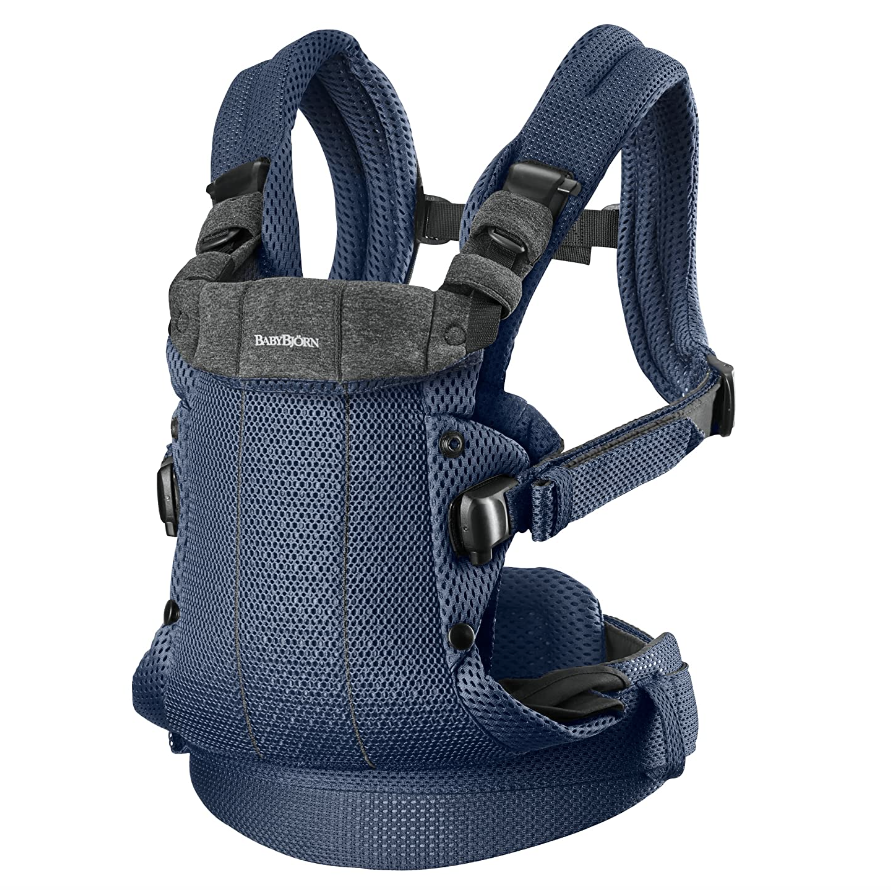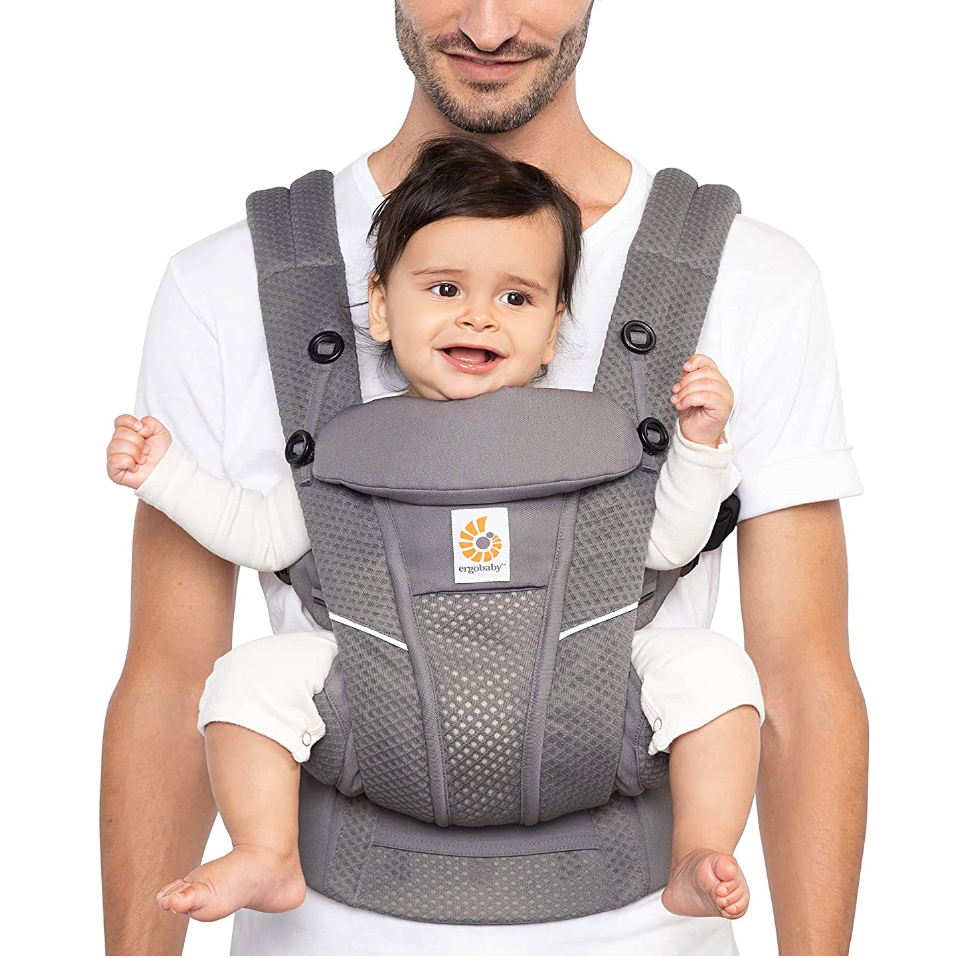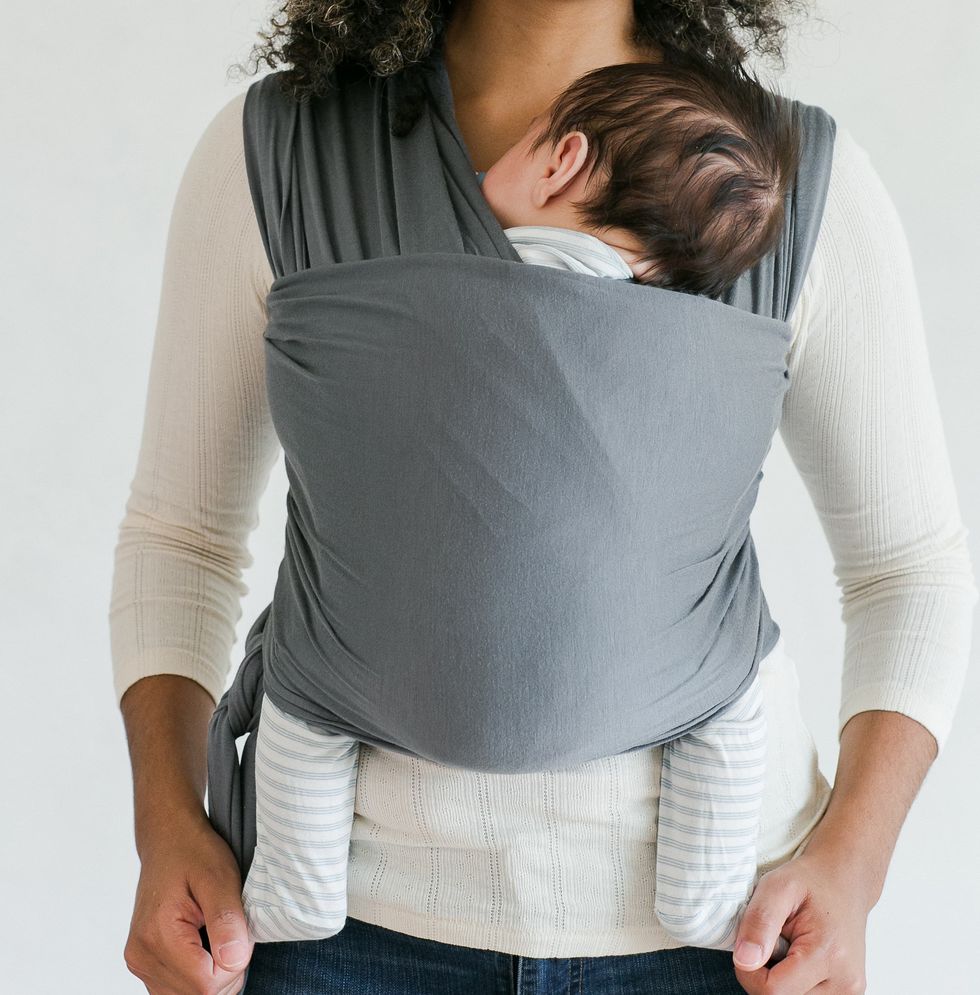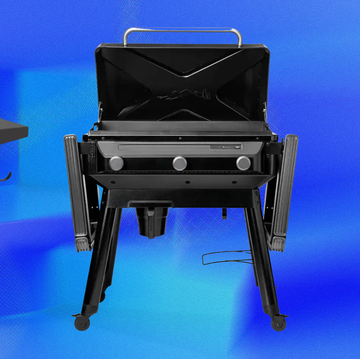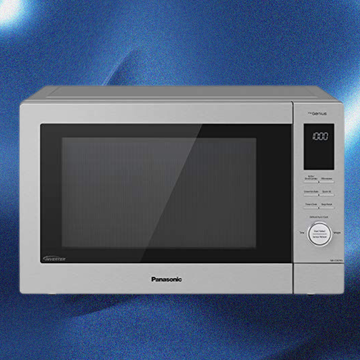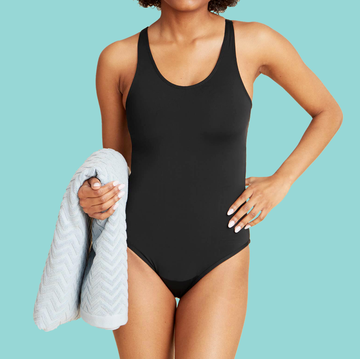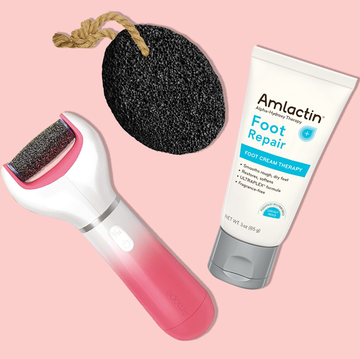12 Best Baby Carriers of 2024
Slings, wraps and packs for newborns, infants and toddlers.
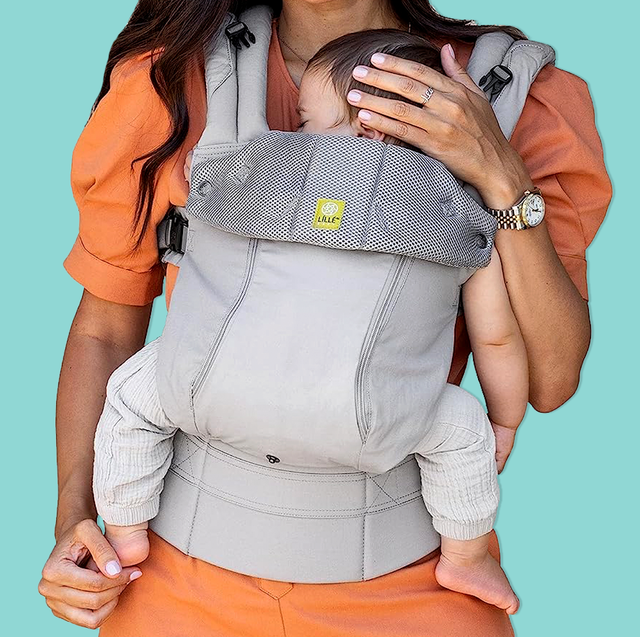
We've been independently researching and testing products for over 120 years. If you buy through our links, we may earn a commission. Learn more about our review process.
Baby carriers are game changers when you need to be hands-free, but picking out the best infant carrier to spend your money on can be confusing, especially if you're still expecting your baby and you've never tried one on before. There are many options, ranging from simple fabric wraps to structured carriers to backpack-style frame carriers for hiking. You want to make sure you're investing in one that's easy for you to put on, comfortable to wear for half an hour or more and, ultimately, durable so you get a lot of use out of it.
The Good Housekeeping Institute's parenting and product experts review all the essential products for babies and their caregivers, from maternity clothes and baby monitors to bath toys and organic baby food. To find the best baby carriers to buy, our fiber scientists, engineers and parenting pros have logged thousands of hours testing dozens of models over the past eight years. We factor in things like ease of use, comfort and ergonomics (for both wearer and baby), adjustability for multiple caregivers and a growing baby, versatility for wearing it in different positions, mobility for the wearer, and overall washability.
At the end of this guide, you can read more information about how we test baby carriers, how to choose the right baby carrier for you and what to consider while you're shopping. In the market for more ways to bring your baby everywhere you go? See our picks for the best infant car seats, the best baby strollers and the best baby walking shoes for your little one's first steps.
Pros
Adjustable and versatile for years
Breathable mesh fabric
Padded shoulder straps and waist belt
Cons
Clips are fairly bulky
BabyBjörn's founder and creative designer (a Swedish mom) invented the structured carrier 50 years ago, in part to help dads bond with their baby.
It's still one of the most popular brands globally among parents and can grow with your baby from infancy through age 3. It has the necessary ergonomic design for a baby, and its wide, padded straps and waist belt offer good support for the wearer. We did find that learning how the clips work takes a bit of practice, but once you get it, they're easy to keep using. Because the clips are fairly substantial, this is the heaviest carrier on our list — but in many cases, only heavier by a few ounces.
This carrier converts to four classic setups you can switch between as your child grows: front inward-facing (one setting for newborns with their legs splayed out and their bottom low, and one for older babies), front outer-facing and back-carrying. The Harmony, among the brand's newest carriers, is made using a high-tech mesh fabric that's more breathable, flexible and lightweight than older BabyBjörn carriers. The Harmony also offers greater lumbar support, a feature that can help a parent carry a toddler weighing up to 40 pounds.
If you're also looking for a place to set your baby down at home when you're not feeding or carrying them, we're big fans of BabyBjörn's baby bouncers.
| Weight range | 7 to 40 lbs |
|---|---|
| Positions | 4 (facing inward for newborns, facing inward for babies, facing outward, on back) |
| Carrier weight | 2.81 lbs |
| Material | Polyester |
| Available colors/patterns | 3 |
Pros
Affordable
Lightweight
More than 46,000 five-star reviews on Amazon
Cons
Less padding in the shoulder straps compared with other carriers
Structured carriers can get pricey, but this one wowed our Lab pros with how well it performed at a fraction of the cost of others. Though it doesn't have as much supportive padding as other carriers, most users say it's lightweight and comfortable to wear. At this price, it's worth trying out for your needs.
It's both adjustable at the waist and shoulders and convertible to use with your baby facing in, facing out (once they have excellent head control) and on your back (when your baby can sit up unassisted, generally after their first birthday). Plus, it has more than 46,000 five-star Amazon ratings, including in-depth reviews to pore over. Some Amazon reviewers reported that it restricted circulation in their baby's legs, so make sure the seat is configured to be wide enough for your baby before you place them in it.
| Weight range | 8 to 32 lbs |
|---|---|
| Positions | 4 (facing inward with seat folded, facing inward with seat expanded, facing outward, on back) |
| Carrier weight | 1.2 lbs |
| Material | Polyester |
| Available colors/patterns | 4 |
Pros
Many ways to customize fit and position
Comfortable for long outings
Cons
May be cumbersome for people with smaller frames
An Ergobaby carrier can be worn on your front or on your back, but also on your hip, which can be comfortable when your baby gets bigger. We love that it comes with a storage pouch so parents can grab their keys and a debit card and go. There are several ways to get it to fit your body correctly, with the opportunity to use a back buckle or have the straps cross in the back.
The Omni Breeze offers great support for the caregiver, so this one's ideal for hikes or longer outings with your baby when you won't be using a stroller. Just note that it's a bit bulkier and may be too over-the-top for people with smaller frames — or anyone who mostly wants to wear their baby around the house for bonding time.
We named one of the brand's similar carriers, the All Carry Positions Aerloom baby carrier, a winner in our 2023 Sustainable Innovation Awards. The carrier uses the brand's FormaKnit material, which is made of 87% postconsumer recycled polyester.
READ OUR FULL REVIEW: We Tested the Ergobaby Carrier
| Weight range | 7 to 45 lbs |
|---|---|
| Positions | 4 (facing inward for newborns, facing inward for babies, facing outward, on back) |
| Carrier weight | 2.23 lbs |
| Material | Polyester |
| Available colors/patterns | 7 |
Pros
Highly adjustable for parents of different sizes
Cotton material with just a mesh panel is preferred by some parents
Cons
Our lab experts prefer it for babies 6 months and up
Tula first grabbed parents' attention with a wide range of colors and patterns; the brand still offers more fashion choices than many other brands.
This soft cotton carrier has a mesh panel down the middle to keep your baby comfortable, plus three different width adjustments for your baby's legs as they grow. Our Lab experts like this carrier best for older babies who have excellent head control and can face forward, but testers say they love this for young, inward-facing babies too.
"I like that this is a little more compact than other structured carriers," one tester told us. "Others are long, and my baby was little, and I'm not tall either, so the Tula was comfortable for the two of us." Though we've heard firsthand that it fits petite parents well, there are also many online reviews from plus-size parents who say this carrier fit them comfortably.
The brand says the waistband adjusts from 27 to 57 inches, which is nice to know; many other brands do not divulge exact size ranges but instead say they fit "most" or "all."
| Weight range | 7 to 45 lbs |
|---|---|
| Positions | 3 (facing inward, facing outward, on back) |
| Carrier weight | 2.58 lbs |
| Material | Cotton |
| Available colors/patterns | 8 (more on the Tula website) |
Pros
Sized for a baby, rather than a toddler
Less cumbersome than the longer-lasting carriers
Cons
Good for only about the first year of your baby's life
If you plan on wearing your baby during the early months and aren't so concerned with having them in a carrier as a toddler, the BabyBjörn Baby Carrier Mini is a fantastic size and lightweight.
It doesn't have the lumbar support of a regular BabyBjörn carrier, but if you're only holding a baby less than a year old in it, you may not need that added support. You'll have fewer straps to buckle, and you'll save money too.
"The Mini was great during the first three months especially," one tester, a first-time mom, told us. "We even went hiking with it!" The brand carries the Mini in many solid colors, including this new-for-2023 purple shade.
| Weight range | 7 to 24 lbs |
|---|---|
| Positions | 2 (facing inward or facing outward) |
| Carrier weight | 1.72 lbs |
| Material | Cotton (shown) or polyester |
| Available colors/patterns | 14 |
Pros
Soft, lightweight fabric
Encourages bonding with your infant
Easily fits in a diaper bag
Cons
Takes practice to get used to wrapping
Not for use beyond 9 months
A baby wrap is essentially a long piece of fabric that wraps snugly around you and your baby to encourage bonding and create the calming effect that newborns crave.
While it isn't super intuitive to use at first, a few video tutorials can help you master all of the wrap techniques until they're as easy as tying your shoes. You can wrap it a few ways depending upon the size and developmental stage of your baby, including in a style that supports the head and neck of a newborn.
The lightweight modal fabric is unbelievably soft and machine washable, and there's a clever built-in pocket for storage inside a diaper bag or elsewhere. We like this wrap as a way to keep your baby close and your hands free while you're at home. It's also a nice way to wear your baby while out and about.
Despite the wrap's softness, though, modal isn't as sturdy as other types of fabric. Modal is typically used in garments like pajamas and underwear, whose next-to-skin comfort is prioritized as the most important feature, as opposed to factors like durability. Note, too, that the wrap is not to be used past 9 months.
| Weight range | 8 to 25 lbs |
|---|---|
| Positions | 1 (facing inward) |
| Carrier weight | 1.1 lbs |
| Material | Tencel modal |
| Available colors/patterns | 4 (more on the Solly Baby website) |
Pros
Quick and easy to put on
Soft, stretchy, machine washable fabric
Packs into a small case for easy carrying
Cons
No padded shoulder straps, so not for toddlers
Only one color
This hybrid model combines the waist and shoulder straps you get from structured carriers with the comfortable fabric from wraps.
We especially love how easy it is to put on yourself — no pre-adjusting clips and buttons like structured carriers and no fumbling to tie a single piece of fabric around your body. With this one, you just clip the waist, put the straps over your shoulders and tie the loose fabric around the middle.
There's no shoulder padding for support, and it comes in just one color, but the material is super soft, fully machine washable and UV protective. Also, this carrier isn't as pricey as others. Wear it from the newborn days until your baby becomes a toddler, and, since it folds down into a small case for easy storage, you can bring it everywhere.
| Weight range | 8 to 35 lbs |
|---|---|
| Positions | 3 (facing inward for newborns, facing inward for babies, facing outward) |
| Carrier weight | 2.33 lbs |
| Material | Polyester/spandex |
| Available colors/patterns | 1 |
Pros
Built-in lumbar support
Wear on your front, back or hip
Cons
May need another person's help reaching all buckles
If you're worried about how your back will handle wearing your baby, the LÍLLÉbaby has thickly padded straps, unique lumbar support and a thick strap across the back to help distribute the weight — our dad testers in particular liked wearing it.
We'll just note that all the extra protection makes the carrier itself a little heavier than some others on this list, and the buckles may be slightly challenging to reach by yourself.
It's also unique because it can be converted to six different positions, from newborn through toddler settings, and front-, back- and hip-carrying. As an added bonus, there's built-in storage to keep your baby's must-haves close by.
| Weight range | 7 to 45 lbs |
|---|---|
| Positions | 6 (facing inward [fetal seat position, narrow seat position for babies and wide seat position for toddlers], facing outward, on hip, on back) |
| Carrier weight | 2.5 lbs |
| Material | Polyester and cotton |
| Available colors/patterns | 5 |
Pros
Easy to adjust fit by pulling fabric through ring
Extremely lightweight
Easy to pack in a diaper bag
Cons
Takes time to learn how to use it properly
Like a wrap carrier, this sling uses a long piece of fabric to keep your baby close and snug, but it has the added feature of a ring to help you adjust the fit.
You can also continue to wear it with your toddler; it's designed to sit a toddler of up to 33 pounds at your hip. Just keep in mind that it doesn't have the same type of shoulder support you'll find in the structured carriers.
Like other fabric carriers, it's soft and machine washable for everyday babywearing. It's also the lightest option on our list. It's an 85-inch-long stretch of fabric, so it works well on parents of nearly every size.
| Weight range | 8 to 33 lbs |
|---|---|
| Positions | 2 (facing inward for babies, on hip for toddlers) |
| Carrier weight | 1.06 lbs |
| Material | Cotton |
| Available colors/patterns | 4 |
Pros
Ideal support for all-day carrying
Built-in protective sunshade
Several storage compartments
Cons
Child must weigh at least 16 pounds
For adventure-loving families, this premium back carrier is the perfect way to bring little ones along to explore. It's worn just like a hiking backpack and has sturdy padded straps, clips at the waist and chest and easy adjustability to offer optimal support.
Plus, there are built-in pockets for storing your essentials and a hydration sleeve to hold your water. We love that this backpack carrier has a built-in sunshade, removable foot stirrups and mesh panels to allow for airflow. Note, however, that unlike other kinds of baby carriers for infants, this one is designed for babies weighing at least 16 pounds and at least 6 months of age.
"We used this in Yosemite when my second child was still a toddler," one of our testers told us. "I was afraid he would fuss in it, but I think he was both comfortable and happy with the view." Just know that there's a bit of a process to loading them in and getting this positioned comfortably on you. If you'll be hiking, it's worth it to get it right before you head off.
| Weight range | 16 to 40 lbs |
|---|---|
| Positions | 1 (on back) |
| Carrier weight | 7.69 lbs |
| Material | Polyester |
| Available colors/patterns | 2 |
Pros
Lightweight
Helps offload weight while carrying a big baby or toddler
Built-in storage
Cons
Not hands-free
A hip seat carrier is ideal for older babies who like to be held, so their parent won't throw out a hip. The wide, padded band is adjustable for 24- to 44-inch waists.
TushBaby says the carrier is for newborns through age 3, but our Lab experts recommend only walking around with it once your baby can sit with great head control (usually by about 9 months). For younger babies, it can make for a good support worn on the front of your body if you're nursing or bottle-feeding while sitting or standing up.
The memory foam seat has an anti-slip fabric panel to help keep baby in place. There are large storage pockets, allowing this carrier to double as a fanny pack/diaper bag.
| Weight range | 8 to 45 lbs |
|---|---|
| Positions | 2 (front or hip) |
| Carrier weight | 1 lb |
| Material | Not listed |
| Available colors/patterns | 2 |
Pros
Front and back tandem
Converts into two single carriers
Cons
Expensive
For parents who need to be hands-free while carrying two babies, this front and back tandem carrier is an ideal setup to keep weight evenly distributed. It's structured with ergonomic positioning for the babies and thick padded straps to support the wearer.
The waist is adjustable to fit multiple caregivers (it goes from an astounding 20 to 99 inches). Plus, the tandem carrier can also convert into two single carriers if you have two people available to carry the twins. And don't let the brand name fool you: You can use it with siblings of different ages when they both need to be carried. We like that each side includes a little cotton hood you can pull over a baby to give them shade.
| Weight range | 10 to 45 lbs |
|---|---|
| Positions | 2 (a baby in front and a baby in back, 2 babies in front of 2 different caregivers) |
| Carrier weight | 2.64 lbs |
| Material | Not listed |
| Available colors/patterns | 2 |
How we test baby carriers

At the Good Housekeeping Institute, we've looked at dozens of models of baby carriers over the past eight years.
In addition to conducting Lab tests, we have our own experts and parents from our consumer panel log thousands of hours testing different models with babies of all ages to provide extensive data from real-life experiences (as pictured).
We ask parents to give their feedback on how easy the baby carriers were to fit and wear correctly, whether they could get them on and off without help, how comfortable the carriers were to wear over time, how adjustable the carriers were for different caregivers and how adjustable they were as their baby grew. We also ask about durability and washability.
What to look for when shopping for the best baby carrier

While you're searching for the right baby carrier to buy, keep these features in mind:
✔️ Size range: Carriers have both minimum and maximum weights for your baby. Consult your pediatrician for your baby's current weight and size, and read all the guidelines that come with a carrier before using it to be sure your baby and the carrier are a good fit.
✔️ Adjustability: Make sure the baby carrier can comfortably fit different bodies if more than one caregiver will be wearing it.
✔️ Positions: Many carriers allow the baby to be seated in multiple ways, including front inward-facing, front outward-facing, on the hip and on the back. Some also have newborn positioning to make sure the baby is properly supported.
✔️ Wide seat: It's especially important that there's enough room for a newborn's proper hip alignment. Their legs should be separated, with the hips and knees bent in an "M" position. The International Hip Dysplasia Institute provides a list of baby carriers that conform to its standards.
✔️ Fabrication: There are several different carrier types that are made with different materials. The simple fabric carrier options are easy to put on, comfortable when used with infants and compact and lightweight to carry. On the other hand, the more structured carriers are more supportive, so they're better suited for long-term use. You'll also want to check the care instructions; a machine washable carrier is certainly a perk.
Do I need a baby carrier?

"Baby carriers are great. They allow babies to work on their head control," says pediatric physical therapist Magdalena Oledzka, Ph.D., clinical lead for pediatric rehabilitation at the Hospital for Special Surgery in New York City. "One word of caution: If your baby has a preference for which side they rotate their head toward, gently help them try the other direction so they turn to both sides more equally."
Consider whether you'll want to walk outdoors without a stroller and whether you'd like to carry your baby hands-free at home. If you already have another child that keeps your hands full (literally), and you'll be pushing that child in a stroller, decide if you want to keep your newborn in a carrier before moving to a double stroller.
Remember that infants often seek the close contact you get from babywearing, and it helps you bond with your child in the early days. So, while a baby carrier is hardly a must-have, it does make that first year of parenting a bit nicer and easier. We recommend adding one to your baby registry.
Which type of baby carrier is best for me?

There are many styles to choose from. Ultimately, it comes down to personal preferences, the age and size of your baby, your activity level and where you’re planning to wear the carrier.
We'll be honest here and also note that, just as many families end up with more than one stroller, many parents we talk to end up with more than one carrier for their changing needs and growing baby.
Here are the types of baby carriers to know about:
- Ring slings and wraps: Ideal for newborns, these carriers use long pieces of fabric to keep your baby snug against your body. They're minimal, comfortable, easy to take on the go and versatile to reposition for naps and breastfeeding. The downside is that they can be tricky to get the hang of and are less supportive for parents carrying bigger babies.
- Structured carriers: The most popular style, these look more like book bags, with adjustable straps, clips and padding throughout. They're more supportive than slings and wraps and can last for years, but parents should make sure that babies are in the proper ergonomic positioning for each developmental stage. Many styles grow with your baby, so they can face inward when your baby is a newborn and outward once they have neck support and want to look around.
- Hybrids: A hybrid is a newer model that combines the ease of use of structured carriers with the comfort and adjustability of wraps. They typically have straps for your waist and shoulders with fabric to tie around the middle.
- Hip seats: As a baby gets older and is able to support their own head and neck, some parents prefer a hip carrier that's basically like a fanny pack with a seat. They're not hands-free, so you’ll still need to hold onto your baby, but they can help offset the weight from carrying them in your arms.
- Backpacks: For older babies with head and neck control, these are intended for all-day wear, whether you're hiking or traveling. They're sturdier than typical structured carriers and look like hiking backpacks, just with a bigger footprint, but they offer optimal support.
Why trust Good Housekeeping?

The scientists, researchers and experts who work at the Good Housekeeping Institute evaluate products and make recommendations for consumers. Our work isn't new — the GH Institute is more than 100 years old.
Baby carriers were tested and rated by Executive Director Lexie Sachs, who oversees evaluations for all fabric-based parenting products, from diaper bags to crib mattresses to baby swaddle blankets and beyond. She also frequently used baby carriers with her own daughters and has personally tried out several of the picks featured in this article.
This latest update to this story was done by contributing writer Jessica Hartshorn, who brings decades of gear-evaluation experience from her previous editor roles at American Baby and Parents magazines. She wore both of her babies as well!
Lexie Sachs (she/her) is the executive director of strategy and operations at the Good Housekeeping Institute and a lead reviewer of products in the bedding, travel, lifestyle, home furnishings and apparel spaces. She has over 15 years of experience in the consumer products industry and a degree in fiber science from Cornell University. Lexie serves as an expert source both within Good Housekeeping and other media outlets, regularly appearing on national broadcast TV segments. Prior to joining GH in 2013, Lexie worked in merchandising and product development in the fashion and home industries.
Jessica (she/her) is a freelance writer with several decades of experience writing lifestyle content and evaluating home and parenting products. A mom of two teens and two cats, her previous work can be seen in American Baby and Parents.


The 15 Best Natural and Organic Sunscreens

The Best Mosquito Repellents
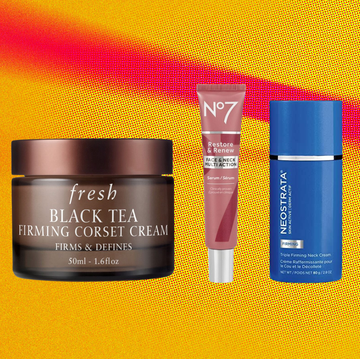
The Best Neck Firming Creams
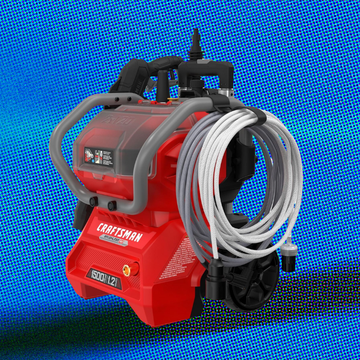
The Best Pressure Washers
